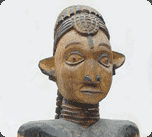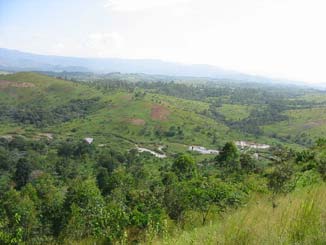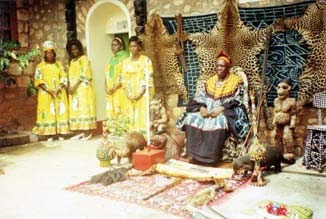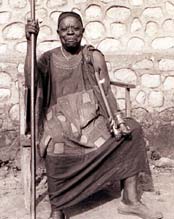A sort of nation-state, Mankon has a clearly defined territory, a population (of various origins) organized into clans and political lineages, perfectly defined institutions and a military force directed by a sacred sovereign, the fon (chief, king).His powers are counterbalanced by the notables, b ükum (sing : nkum), chiefs of clans and lineages, grouped into regulatory societies and councils that make up the skeletal structure of all the social organization.The royal dynasty that has ruled over Mankon has 20 fon whose names and order of succession are uncertain, at least regarding the earlier period before the 16th/17th centuries, corresponding to an obscure period of history.The emblems of the kingdom on the one hand, the living emblems that are the kings, queens, notables and customary societies and on the other hand by the figurative emblems that are the sculpted or painted objects, the monuments, the costumes, the jewellery, the parades, the celebrations, all these « things of the palace or of the country » and this symbolic behaviour of the group, are essential for the social cohesion of the kingdom, intervene in multiple rites and are reminders that each person belongs, the living and the dead, to the same group and the land of the ancestors.
|
 |
 King Angwafo, Angwafo II father of King Ndefru III King Angwafo, Angwafo II father of King Ndefru III |
|


















